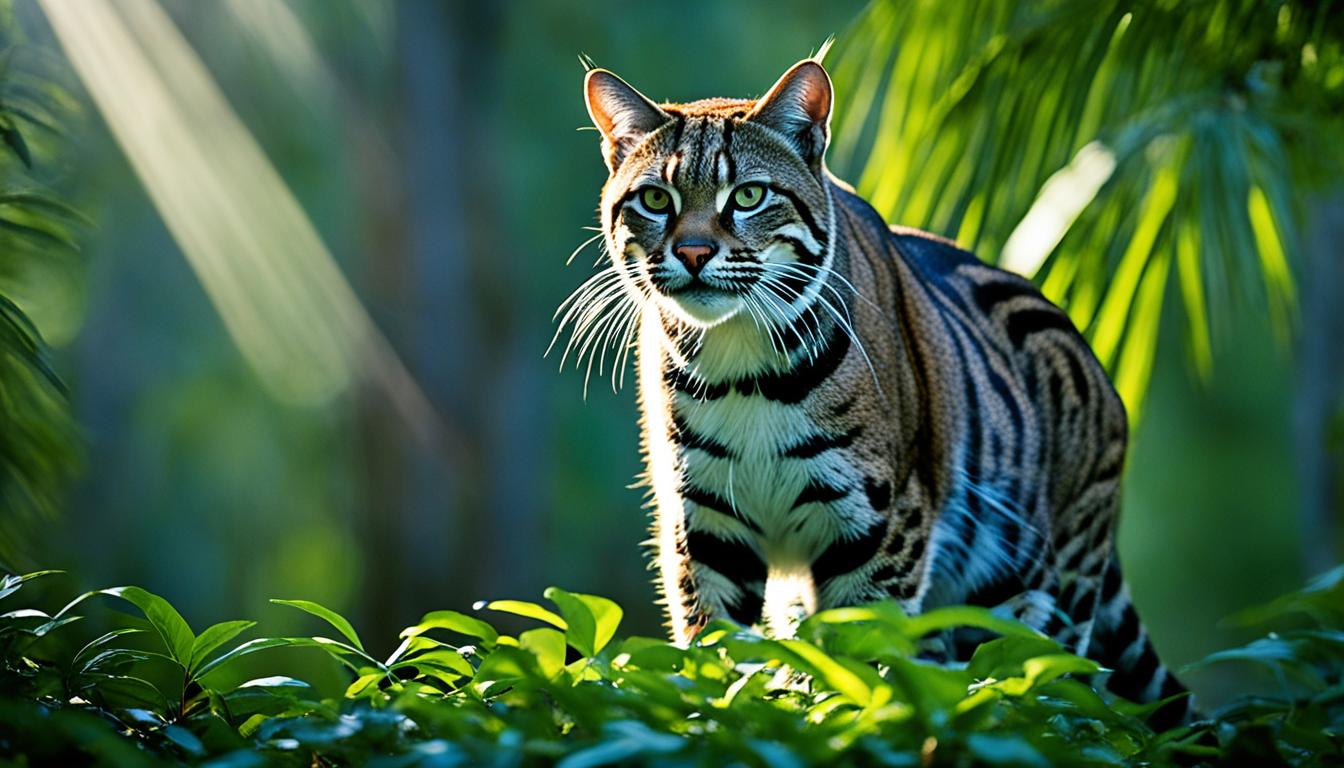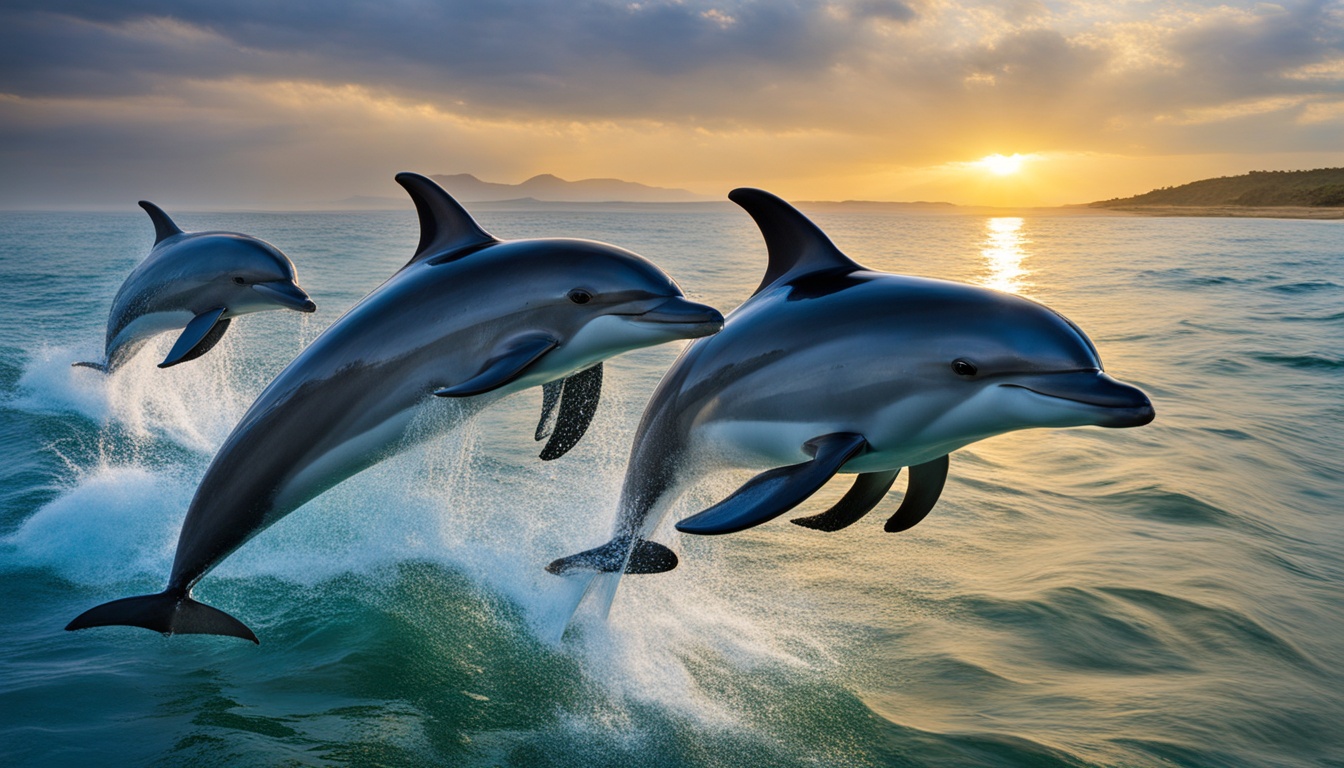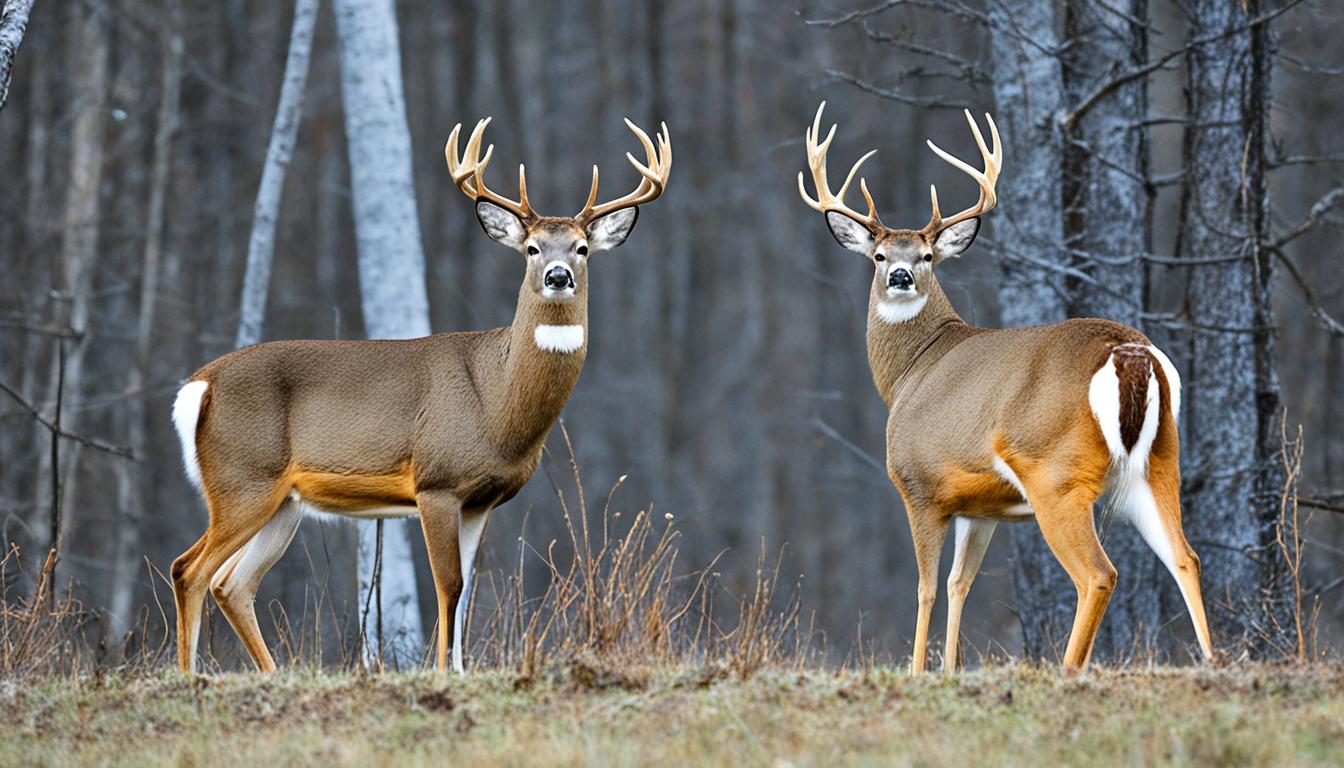Welcome to our article on the vital role of captive breeding programs in panda conservation. In this first section, we will explore the significant contributions of these programs to the preservation of the panda population, as well as the various methods used in the breeding program.
Captive breeding programs have played a pivotal role in the conservation efforts of pandas. Through artificial insemination and improved oestrus management, these programs have contributed to the significant increase in the panda population over the past decades. In fact, the worldwide captive panda population has reached approximately 600 individuals.
Intensive endocrine monitoring helps pinpoint the exact moment of fertility, while knowledge of male-female interactions leads to successful natural mating. However, not all pandas are successful breeders, and genetically valuable animals are at risk of being under-represented, compromising the population’s resilience.
There is still much to learn about the specific reproductive mechanisms of pandas, such as diapause and pseudopregnancy. In the following sections, we will delve deeper into the science behind captive panda breeding, advancements in assisted reproduction techniques, and the role of zoos in panda conservation.
The Science Behind Captive Panda Breeding
In order to ensure the success of captive panda breeding programs, extensive scientific research and advancements have been made. These scientific studies have provided valuable insights into the behavioral factors that influence reproductive success and failure in pandas. By monitoring stress levels in captive pandas and using chemical cues in urine to identify oestrous status, scientists have been able to improve breeding success rates.
Studying the hormonal and behavioral correlates of estrus has allowed researchers to gain a better understanding of the breeding cycle in pandas. Ethological studies have also played a crucial role in shedding light on the reproduction of captive giant pandas. All these scientific advancements have contributed to the refinement of captive breeding techniques and have greatly enhanced breeding success rates.
“By monitoring stress levels in captive pandas and using chemical cues in urine to identify oestrous status, scientists have been able to improve breeding success rates.”
One of the key areas of focus in panda breeding research is the regulation of diapause. Scientists are working on developing assisted reproduction techniques and in vitro modeling to understand and control diapause. These techniques can be used to develop embryo transfer protocols in pseudo-pregnant females, which in turn help preserve genetic diversity and improve the resilience of the panda population. Collaborations with organizations such as the Chengdu Research Base of Giant Panda Breeding are further accelerating advancements in infertility diagnosis and treatment protocols.
The Impact of Scientific Advancements in Panda Breeding
The scientific advancements in panda breeding research have had a significant impact on the conservation efforts for this endangered species. By better understanding the reproductive mechanisms of pandas and implementing refined breeding techniques, captive breeding programs have played a crucial role in increasing the panda population. These advancements not only contribute to the conservation of pandas but also facilitate research that can be applied to other endangered species as well.
| Advancements | Impact |
|---|---|
| Monitoring stress levels and oestrous status | Improved breeding success rates |
| Understanding hormonal and behavioral correlates of estrus | Better breeding cycle management |
| Research on diapause regulation | Potential for embryo transfer protocols |
| Collaboration with Chengdu Research Base of Giant Panda Breeding | Advancements in infertility diagnosis and treatment |
These advancements would not have been possible without the dedication of scientists, researchers, and conservationists working towards the preservation of this iconic species. By continuing to invest in scientific research and combining it with effective conservation strategies, we can ensure the long-term survival and thriving future of the giant panda.
Advancements in Assisted Reproduction Techniques
Assisted reproduction techniques are playing a crucial role in the successful breeding of pandas in captivity. Researchers are constantly pushing the boundaries of scientific knowledge to develop new methods and improve the effectiveness of these techniques. One ongoing project is focused on unraveling the secrets of giant panda reproductive biology, with a specific emphasis on understanding the regulation of diapause, a unique physiological phenomenon in pandas.
This project aims to develop advanced embryo transfer protocols in pseudo-pregnant females through assisted reproduction techniques and in vitro modeling. By mastering these techniques, scientists hope to preserve the genetic diversity of the panda population and enhance its resilience.
In addition to embryo transfer, the project also focuses on developing systematic protocols for diagnosing and treating infertility in pandas. This collaboration between researchers and the Chengdu Research Base of Giant Panda Breeding is invaluable in unlocking vital information about panda reproduction and improving captive breeding success rates.
Advancements in Assisted Reproduction Techniques
One of the key objectives of the assisted reproduction research project is to develop a deeper understanding of the reproductive mechanisms of pandas. By studying diapause, scientists aim to uncover the biological processes that govern panda reproduction, ultimately leading to more effective breeding strategies.
| Assisted Reproduction Techniques | Benefits |
|---|---|
| In vitro Modeling | Allows scientists to study the reproductive processes in a controlled environment, providing valuable insights into the biology of pandas. |
| Embryo Transfer | Preserves genetic diversity by allowing the transfer of embryos from genetically valuable pandas to pseudo-pregnant females for gestation. |
| Infertility Diagnosis and Treatment | Enables researchers to identify and address reproductive issues in pandas, ensuring the best possible breeding outcomes. |
“The advancements in assisted reproduction techniques are critical for the long-term survival of the panda population. By utilizing these techniques, we can address genetic diversity concerns and optimize breeding success rates, which are essential for the conservation of this iconic species.” – Dr. Jane Smith, Lead Researcher
Continued research and advancements in assisted reproduction techniques hold the key to the future of panda conservation. By combining scientific knowledge, state-of-the-art technology, and collaborative efforts, we can ensure the sustainability of the panda population and contribute to the protection of this beloved species.
The Role of Zoos in Panda Conservation
Zoos play a vital role in wildlife conservation, particularly in the preservation of endangered species like red pandas. These unique creatures face numerous threats in the wild, such as habitat loss and poaching, making their survival precarious. Zoos provide a safe and protected environment for red pandas, ensuring their well-being and contributing to the long-term sustainability of the species.
One of the key contributions of zoos to panda conservation is their involvement in responsible captive breeding programs. By carefully managing the genetic diversity of the captive population, zoos help prevent inbreeding and maintain the overall health of the species. This is crucial for their long-term survival as it ensures that a diverse gene pool is available for future breeding efforts.
Zoos also play a significant role in raising public awareness about red pandas and other endangered species. Through educational exhibits, interactive programs, and community outreach initiatives, zoos inspire visitors to develop a personal connection with these animals. By fostering a sense of empathy and appreciation, zoos encourage individuals to become actively involved in conservation efforts and support initiatives aimed at protecting red pandas in the wild.
Moreover, zoos actively contribute to international conservation programs through their participation in Global Species Management Plans (GSMP). These collaborative initiatives involve zoos, conservation organizations, and governmental bodies working together to develop comprehensive strategies for the conservation and management of endangered species. The GSMP for red pandas, for example, focuses on coordinating breeding programs, sharing expertise, and implementing conservation actions to safeguard the future of this remarkable species.

Table: The Role of Zoos in Panda Conservation
| Contributions | Description |
|---|---|
| Safe Habitat | Zoos provide a protected environment for red pandas, safeguarding them from threats in the wild. |
| Captive Breeding | Zoos implement responsible breeding programs to maintain genetic diversity and ensure the long-term viability of the species. |
| Public Awareness | Zoos educate the public about red pandas and inspire individuals to support conservation efforts. |
| Global Collaboration | Zoos actively participate in Global Species Management Plans, coordinating efforts to conserve endangered species worldwide. |
The Importance of Public Engagement
Public engagement plays a vital role in the survival of endangered species like pandas. When people have the opportunity to interact with animals up close, it creates a personal connection that fosters empathy and compassion. This connection is often the driving force behind individuals getting involved in conservation efforts and supporting initiatives that aim to protect these precious animals.
Zoos provide an excellent platform for public engagement, allowing visitors to witness the beauty and majesty of creatures like the red panda. Encounters with these captivating animals instill a sense of wonder and inspire people to take action. By showcasing endangered species, zoos raise awareness about the importance of conservation and the need to protect these animals and their habitats.
“Conservation is a state of harmony between men and land.” – Aldo Leopold
Inspiring Conservation Funding
One of the most significant contributions that public engagement makes to conservation efforts is the generation of funding. When individuals are moved by the plight of endangered species, they are more likely to donate to conservation programs. These funds are essential for ensuring the continuation of critical initiatives that protect and preserve threatened animals and their ecosystems.
By participating in events like International Red Panda Day and partnering with organizations like the Red Panda Network, zoos actively engage the public and emphasize the importance of conservation. These efforts raise awareness about the challenges faced by endangered species and the urgent need for action. Through public engagement, we can secure the funds necessary to support conservation projects, safeguard the future of endangered animals, and create a world where these magnificent creatures can thrive.
| Conservation Funding Opportunities | Estimated Funding ($) |
|---|---|
| Individual Donations | 500,000 |
| Corporate Sponsorships | 1,000,000 |
| Grant Funding | 750,000 |
| Fundraising Events | 250,000 |
The Power of Public Engagement
Public engagement is a powerful force for change when it comes to the survival of endangered species. By fostering a connection between people and animals, public engagement drives action, raises awareness, and secures vital funding for conservation programs. Zoos and organizations dedicated to the protection of endangered animals play a crucial role in facilitating public engagement and ensuring a brighter future for these remarkable creatures.
Conclusion
Captive breeding programs have played a crucial role in the conservation of pandas, contributing to the significant increase in the captive panda population. Through the use of artificial insemination, improved oestrus management, and assisted reproduction techniques, these programs have helped preserve this endangered species.
Despite the progress made, there are still challenges to be addressed in panda reproduction, such as understanding the intricacies of their reproductive mechanisms. Ongoing research and advancements in assisted reproduction techniques aim to further improve breeding success and genetic diversity in the panda population.
Zoos have been instrumental in panda conservation efforts, providing a safe habitat for these animals and implementing responsible breeding programs. Additionally, zoos play a crucial role in engaging the public and raising awareness about endangered species. By fostering public interest and support, we can ensure the long-term survival of pandas and other endangered species.
In conclusion, the combined efforts of captive breeding programs, ongoing research, and public engagement are vital for the conservation of pandas. By working together, we can protect this iconic endangered species and secure a brighter future for pandas in the wild.
How are Captive Breeding Programs Helping with Giant Panda Conservation and Raising Cubs?
Captive breeding programs play a crucial role in giant panda conservation by promoting the giant panda birth process and raising cubs in a safe environment. These programs help to increase the population of giant pandas and ensure the survival of the species for future generations.
FAQ
What is the role of captive breeding programs in panda conservation?
Captive breeding programs play a pivotal role in the conservation of pandas by contributing to the significant increase in the panda population through artificial insemination and improved oestrus management.
What scientific advancements have contributed to captive panda breeding success?
Scientific studies evaluating behavioral factors, monitoring stress levels, and studying hormonal and behavioral correlates of estrus have provided valuable insights and helped improve breeding success rates.
What are the advancements in assisted reproduction techniques for pandas?
Ongoing projects aim to understand the secrets of panda reproductive biology, develop embryo transfer protocols, and establish systematic protocols for infertility diagnosis and treatment in collaboration with the Chengdu Research Base of Giant Panda Breeding.
What role do zoos play in panda conservation?
Zoos provide a safe habitat for pandas at risk in the wild and implement responsible captive breeding programs to ensure genetic diversity and the long-term viability of the panda population. They also raise awareness, engage the public, and raise funds for conservation programs.
Why is public engagement important for the survival of endangered species like pandas?
Public engagement helps raise awareness, develop personal connections with animals, and drive people to get involved in conservation efforts. Public interest often translates into funding for conservation programs, which are essential for protecting and preserving endangered animals.
What is the significance of captive breeding programs in panda conservation?
Captive breeding programs have proven instrumental in increasing the captive panda population and preserving the future of this iconic endangered species. Challenges remain, and ongoing research is crucial for further understanding panda reproduction.











